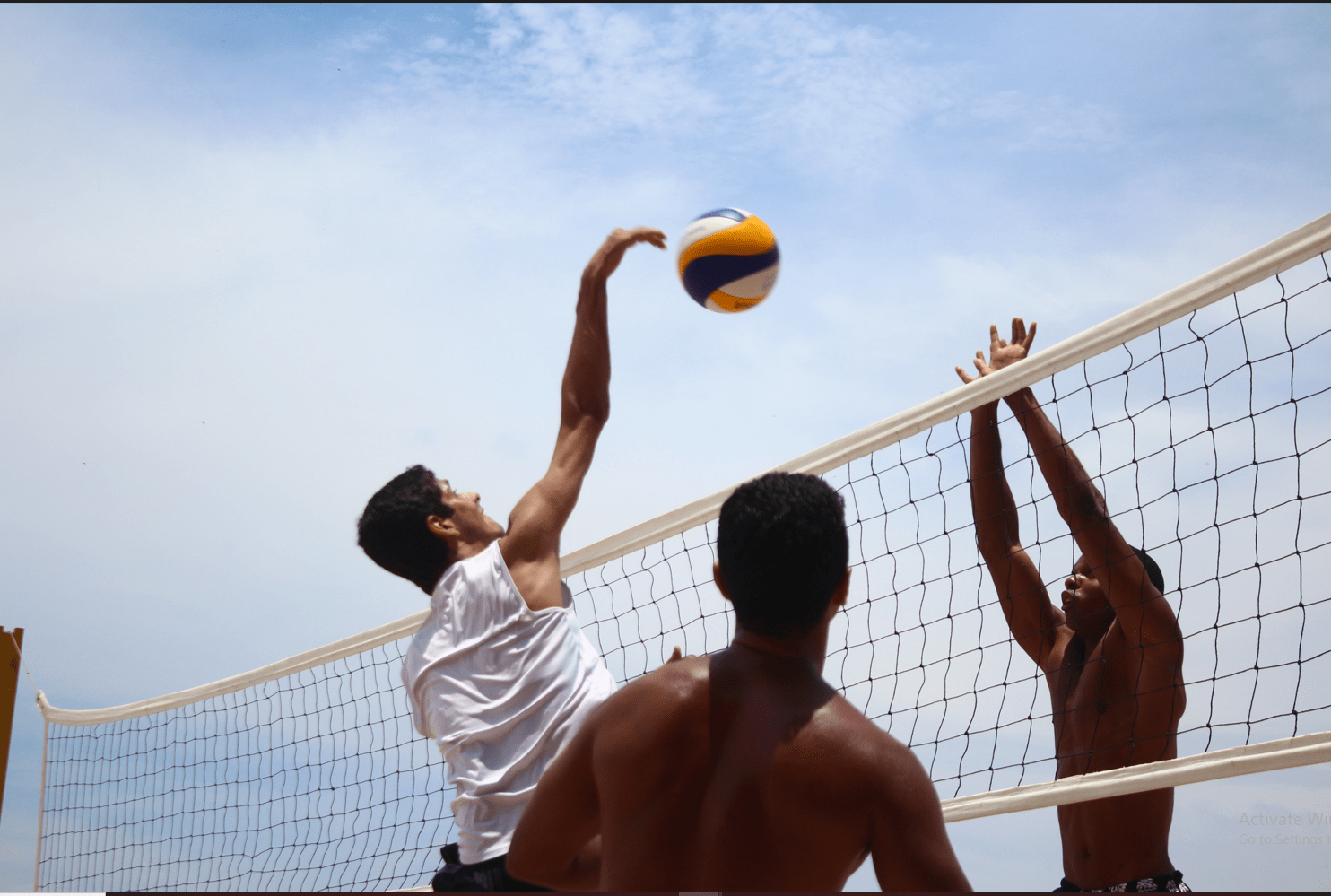Volleyball, a dynamic and exhilarating sport, has captured the hearts of millions around the world. Played in backyards, on beaches, and in professional arenas, this team sport blends power, precision, and teamwork to create a thrilling spectacle. In this article, we will delve into the art and science of volleyball, exploring the history, rules, skills, and the essence of what makes it one of the most popular sports on the planet.
The History of Volleyball
Volleyball, as we know it today, is a sport with a rich history that dates back to the late 19th century. It was invented by William G. Morgan, a physical education instructor in Massachusetts, USA, in 1895. Morgan sought to create a game that could be played indoors and would provide a balance between physical activity and strategy.
Originally named “mintonette,” the sport was played with a net at a height of six feet, and the objective was to hit the ball over the net to the opposing team’s side. The game borrowed elements from basketball, tennis, and handball and quickly gained popularity. In 1896, a spectator at a demonstration game remarked that the sport involved a lot of “volleying,” leading to its name change to “volleyball.”
The sport spread like wildfire and reached international shores. In 1947, the International Volleyball Federation (FIVB) was founded, marking the formal establishment of volleyball as an international sport. Since then, it has become an Olympic discipline and has grown to include various forms of the game, from beach volleyball to sitting volleyball for Paralympic athletes.
Basic Rules of Volleyball
Volleyball is a fast-paced game with straightforward rules that govern its play. Two teams, each consisting of six players, compete to score points by successfully grounding the ball on the opponent’s side of the court. Here are some of the fundamental rules of the game:
The court: A volleyball court is 18 meters long and 9 meters wide, divided into two equal halves by a net. The net is set at a height of 2.43 meters for men and 2.24 meters for women.
Scoring: Teams score points by successfully sending the ball over the net and landing it within the opponent’s court boundaries. The first team to reach 25 points (or 21 in some variations) with a two-point advantage wins the set. A match is typically best-of-five sets.
Serve: The game begins with a serve, where one player from the serving team sends the ball over the net to the receiving team. The server must stand behind the back boundary line and serve underhand.
Rally: Once the ball is in play, both teams attempt to pass, set, and spike the ball over the net while adhering to the “three-touch” rule. Each team has three touches (bump, set, and spike) to return the ball to the opponent’s court.
Rotation: Players rotate clockwise in a fixed pattern after their team wins the right to serve. This rotation ensures that all players get a chance to serve and play in various positions.
Skills and Techniques
Volleyball is a game that demands a combination of physical skills and mental acumen. Here are some of the key skills and techniques that players must master to excel in the sport:
Serving: A well-executed serve is crucial as it initiates the rally. Players can choose between a variety of serves, including the float serve, jump serve, and topspin serve, each with its unique spin and trajectory.
Passing: Passing, also known as the “bump,” is the skill of receiving the serve or other team’s attacks. It involves using the forearms to direct the ball to a teammate for setting or spiking.
Setting: Setting is the precise and delicate act of delivering the ball to an attacking player in a position that allows them to spike it effectively. This requires exceptional hand-eye coordination and touch.
Spiking: The spike is the most exciting and powerful aspect of volleyball. A successful spike involves a player jumping to contact the ball at the highest point and directing it with force and precision into the opponent’s court.
Blocking: Blocking is a crucial defensive skill. It involves jumping at the net to intercept the opponent’s spikes and deflect them back into their court. Effective blocking can disrupt the opponent’s offensive plays.
Digging: Digging is the art of preventing the ball from hitting the ground on the defensive side. Players use their forearms to receive hard-driven balls and keep the rally going.
Anticipation: Volleyball players must be able to read the game, anticipate their opponents’ actions, and position themselves for success. Quick reflexes and an understanding of the game’s flow are essential.
The Essence of Teamwork
Volleyball is not just a collection of individual skills; it is a team sport that thrives on coordination and teamwork. Effective teamwork is the bedrock of success in volleyball. Here’s why it’s so essential:
Communication: Volleyball teams rely on constant communication to coordinate their actions. Players must call for the ball, signal their intentions, and provide feedback to teammates.
Synergy: The synergy between players is vital. Setter-hitter connections, defensive partnerships, and coordinated blocking efforts all require a deep understanding of each other’s abilities and tendencies.
Defense and Offense: A well-functioning team seamlessly transitions from defense to offense and vice versa. This fluidity ensures that the team can capitalize on opportunities and minimize errors.
Trust: Trust is paramount in volleyball. Players must trust their teammates to fulfill their roles effectively, whether it’s setting up a perfect spike or making a critical save.
Adaptability: Teams need to adapt to changing circumstances, such as the opponent’s tactics, the score, and the flow of the game. Effective communication and trust make these adaptations smoother.
Volleyball Variations
Volleyball has evolved to include several exciting variations, catering to different preferences and skill sets:
Beach Volleyball: Played on sandy courts, beach volleyball is a two-player version of the sport that requires exceptional agility, balance, and endurance. The lack of a third teammate places a premium on individual skills and teamwork.
Sitting Volleyball: Designed for athletes with physical disabilities, sitting volleyball is played with a smaller court and lower net. Players must remain seated on the court, relying on their upper body strength and agility.
4×4 Volleyball: A variation with four players on each side, 4×4 volleyball combines elements of both traditional indoor and beach volleyball. It offers a balance between team dynamics and individual contributions.
Footvolley: Combining aspects of volleyball and soccer, footvolley is a sport that emerged on the beaches of Brazil. Players use their feet, heads, and torsos to keep the ball in the air over the net.
The Science Behind Volleyball
Volleyball isn’t just about raw athleticism; it also involves a significant amount of science. From the aerodynamics of the ball to the biomechanics of player movements, science plays a crucial role in understanding and improving performance.
Aerodynamics: The design and aerodynamics of the volleyball play a significant role in its trajectory. The dimples on the ball create turbulence, helping players control its path. Players often use spin and angles to manipulate the ball’s flight.
Biomechanics: The way players jump, move, and strike the ball is governed by biomechanical principles. Studying these movements helps players optimize their techniques and reduce the risk of injuries.
Nutrition and Fitness: Proper nutrition and fitness regimens are essential for players to maintain their energy levels, endurance, and strength throughout a match. A well-balanced diet and targeted fitness routines are crucial.
Sport Psychology: The mental aspect of the game is just as important as the physical. Sport psychology helps players manage stress, stay focused, and maintain a positive mindset on the court.
Injury Prevention: Understanding the biomechanics of movements in volleyball helps in preventing injuries. Players can modify their techniques and use protective gear to minimize the risk of sprains, strains, and more severe injuries.
The Impact of Volleyball
Volleyball is more than just a sport; it’s a global phenomenon that has left a lasting impact on society. Here are a few ways in which volleyball has influenced the world:
Discover profiles of legendary sports players K. L. Rahul and lee chong wei, their achievements, and careers. Explore the stories behind the world’s greatest athletes here
Empowering Women: Volleyball has been a pioneer in promoting gender equality in sports. Women’s volleyball has a massive following, and female athletes have achieved remarkable success on the international stage.
Olympic Legacy: Volleyball has been an integral part of the Olympic Games since 1964, and it continues to captivate audiences during the quadrennial event. The sport has produced countless memorable moments and champions.
Community and Friendship: Volleyball is a sport that fosters community and friendship. Whether played on the beach, in a local league, or at a professional level, it brings people together and creates lasting bonds.
Education and Development: Volleyball is a popular sport in schools and colleges, contributing to the physical and social development of young athletes. It teaches valuable life skills, including teamwork, discipline, and perseverance.
Conclusion
Volleyball is a thrilling sport that combines athleticism, precision, and teamwork in a way that few others do. With a rich history, simple yet compelling rules, a wide array of skills and techniques, and a significant scientific underpinning, volleyball has become a global sensation. From the sandy beaches of California to the indoor courts of professional leagues, volleyball has carved a unique place in the world of sports. Whether you’re a seasoned player, a casual fan, or a newcomer to the sport, there’s always something new and exciting to discover in the art and science of volleyball.





